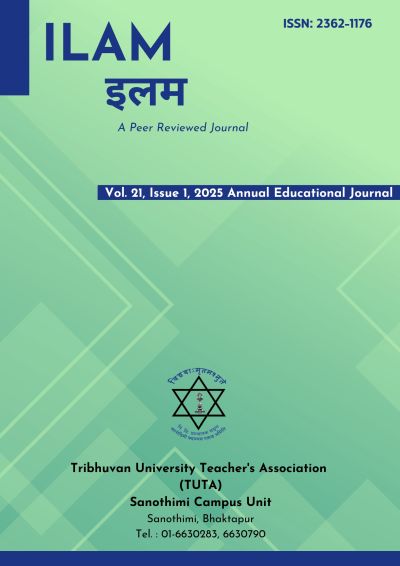Imagining Symbiosis: A Critique of Human-Animal Dichotomy in E.B. White's Charlotte's Web
DOI:
https://doi.org/10.3126/ilam.v21i1.75650Keywords:
Symbiosis, dichotomy, speciesism, reciprocity, exploitationAbstract
This research work explores the relationship between human beings and animals with the ecocritical lens. It finds a symbiotic relationship between the two species that leads the work to critiquing pervasive speciesism in human. This research draws on critical and theoretical insights from Emmanuel Levinas’s (1995) ethical perspectives on interest, Derrida’s (2008) concept of relative existence, as well as issues of ecological-environmental justice and other philosophical, ethical, and biological viewpoints from the critics. These considerations are central to critiquing the human-nonhuman animal dichotomy and highlighting a state of symbiosis.The human and nonhuman beings appear in the contesting relation in the culture leading to the state of negation, exploitation, consumption and extinction. From wild to tamed, aquatic to terrestrial, small to the big, powerful to the powerless all nonhuman animals have to live defensive lives and humans behave in offensive way against them. The discourse that human is endowed with prerogatives over the nonhumans is self-created. Thus, the rivalry between human and animal is a suicidal contest between culture and nature. This research work focuses on understanding the original relationship between humans and nonhuman beings. It examines how humans perceive and interact with animals. It also explores the reasons behind human attitudes toward animals. Additionally, it highlights how animals shape human identity and existence. Finally, it emphasizes the need to establish a symbiotic bond between humans and nonhuman beings for sustainable coexistence. Human-animal relationship is shown through the study of the primary text, Charlotte's Web (1952).




